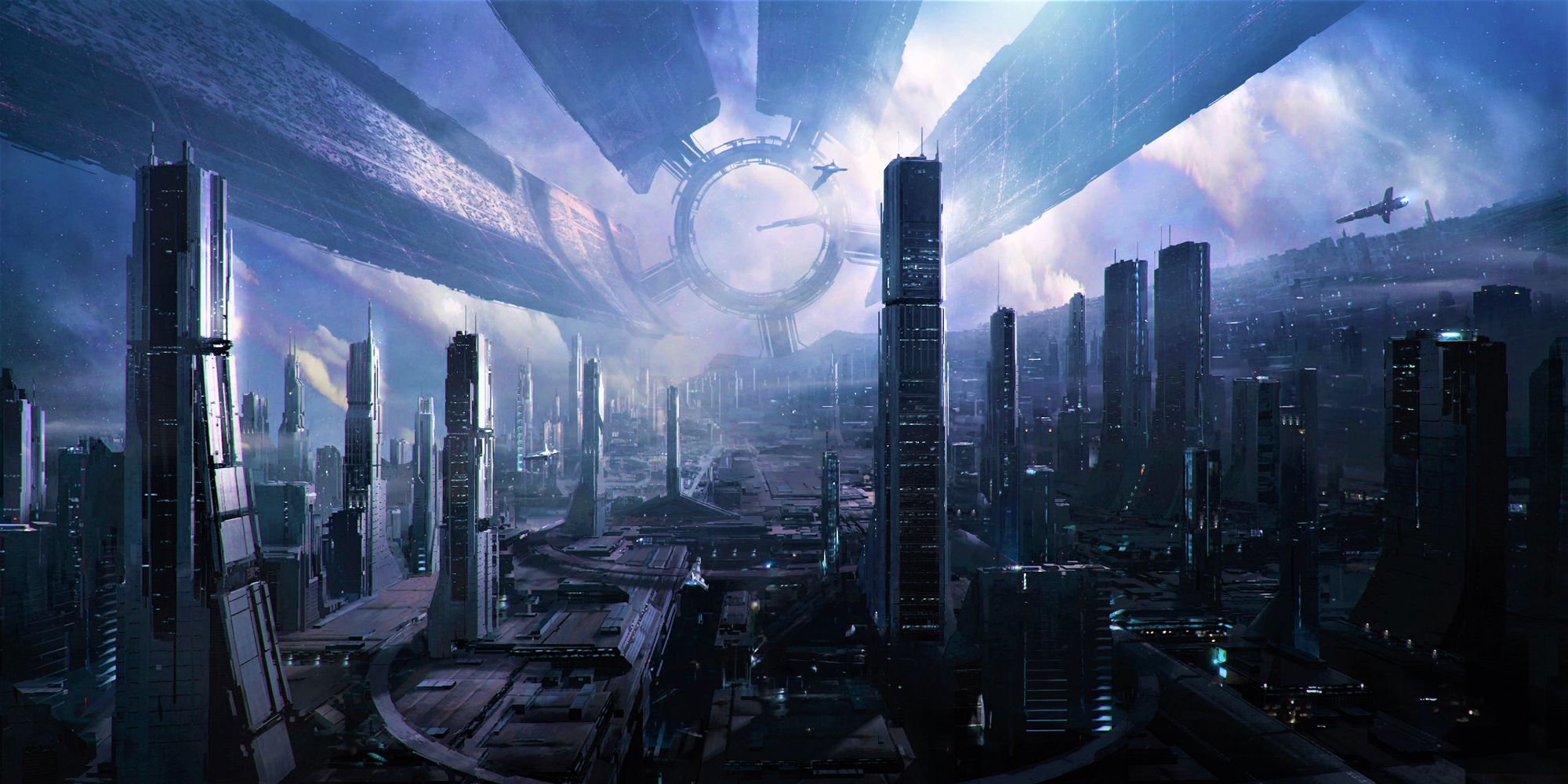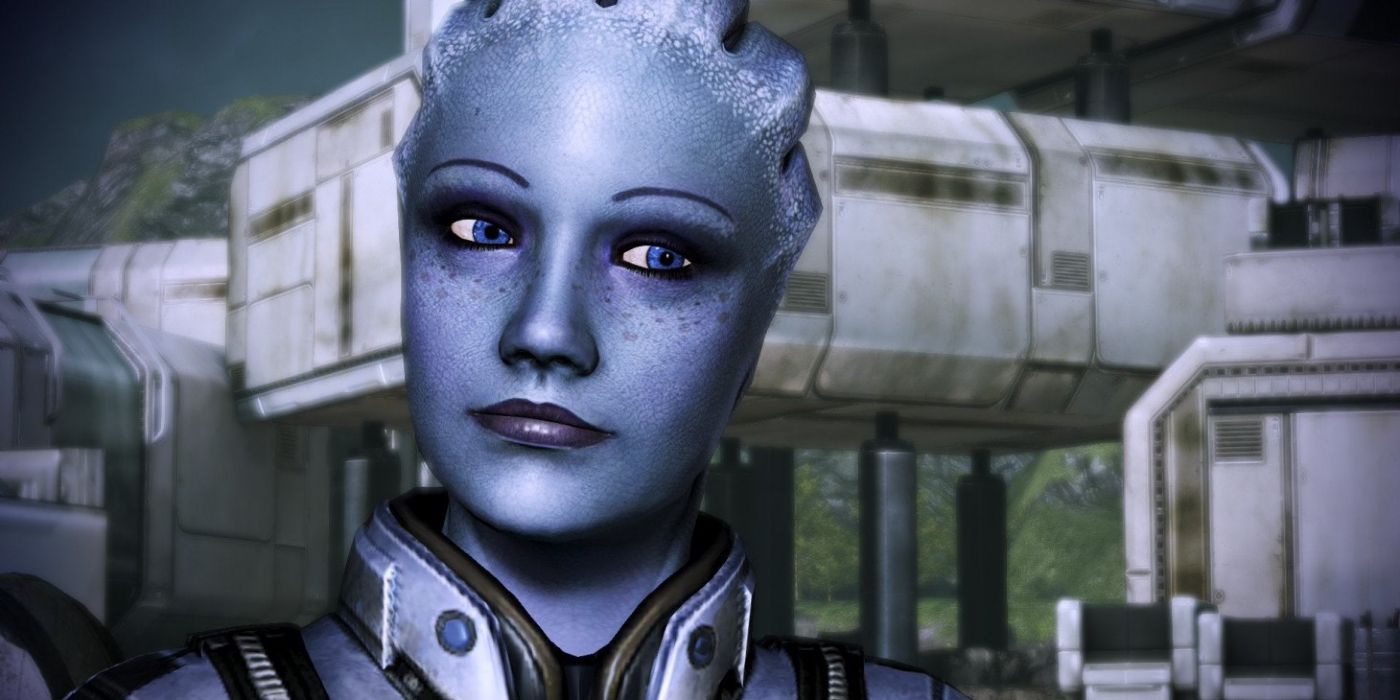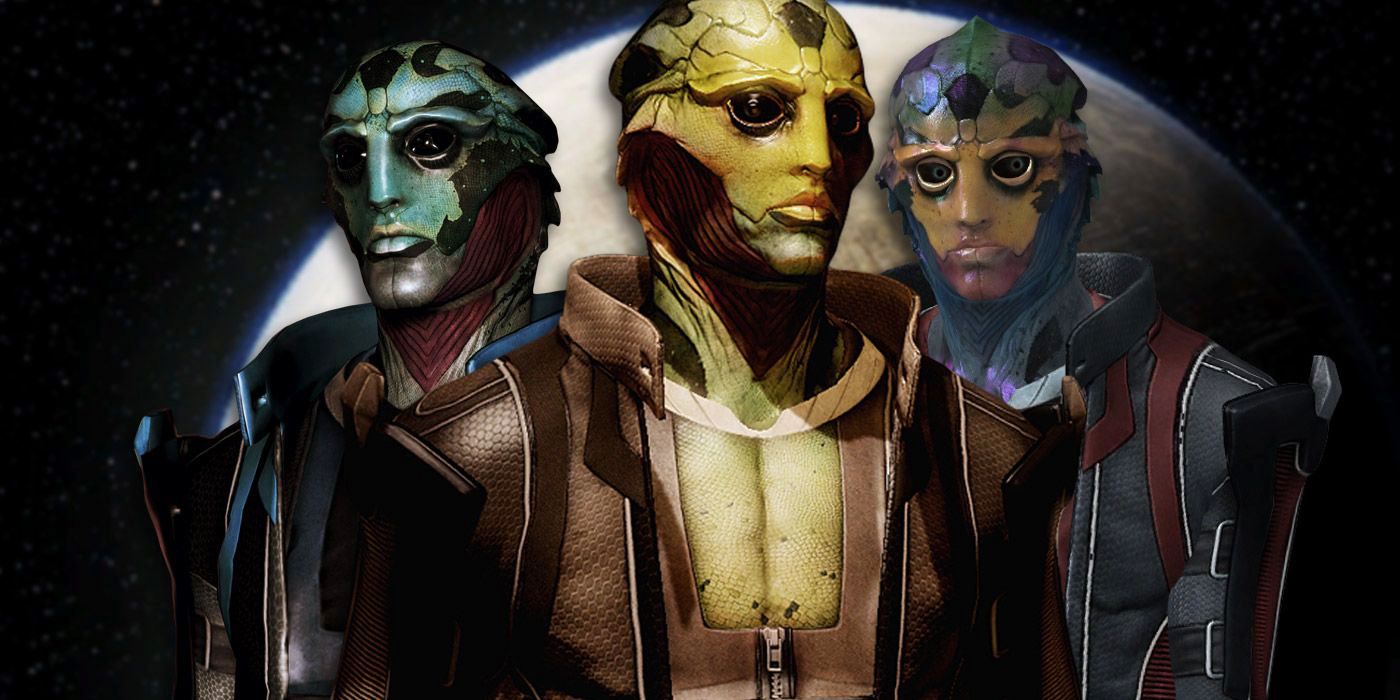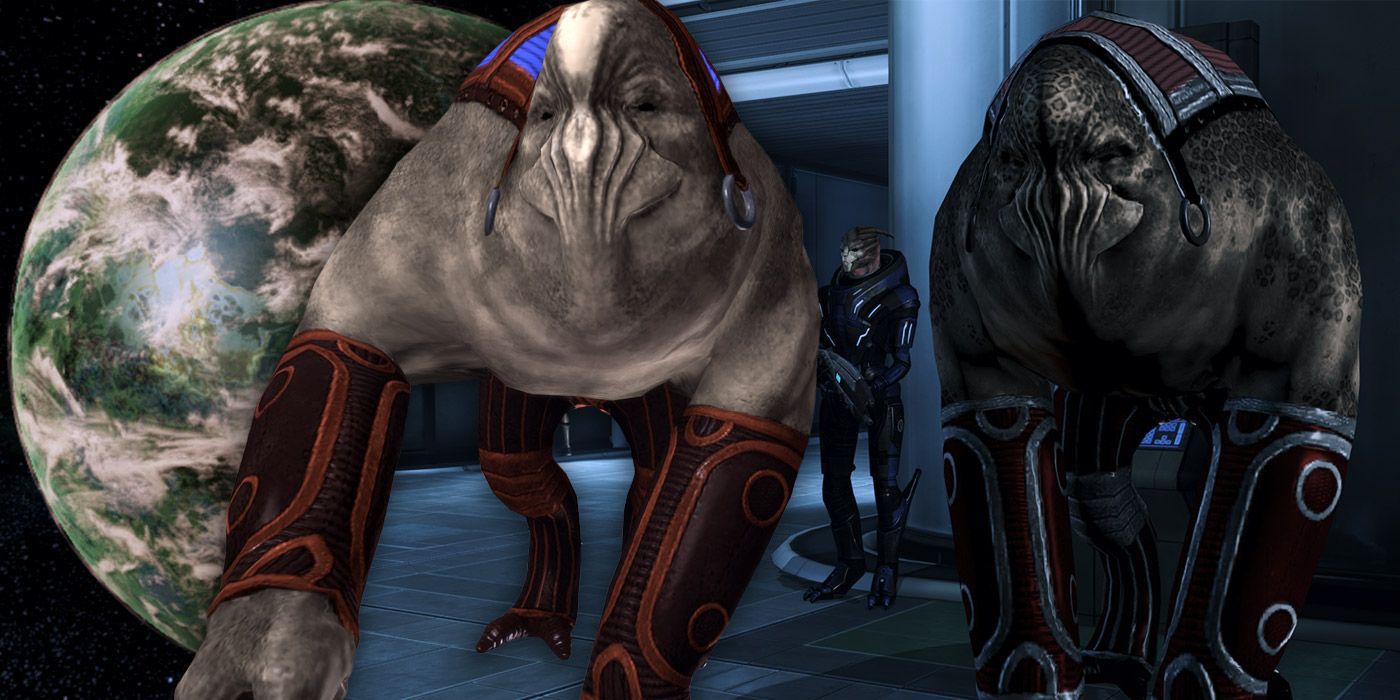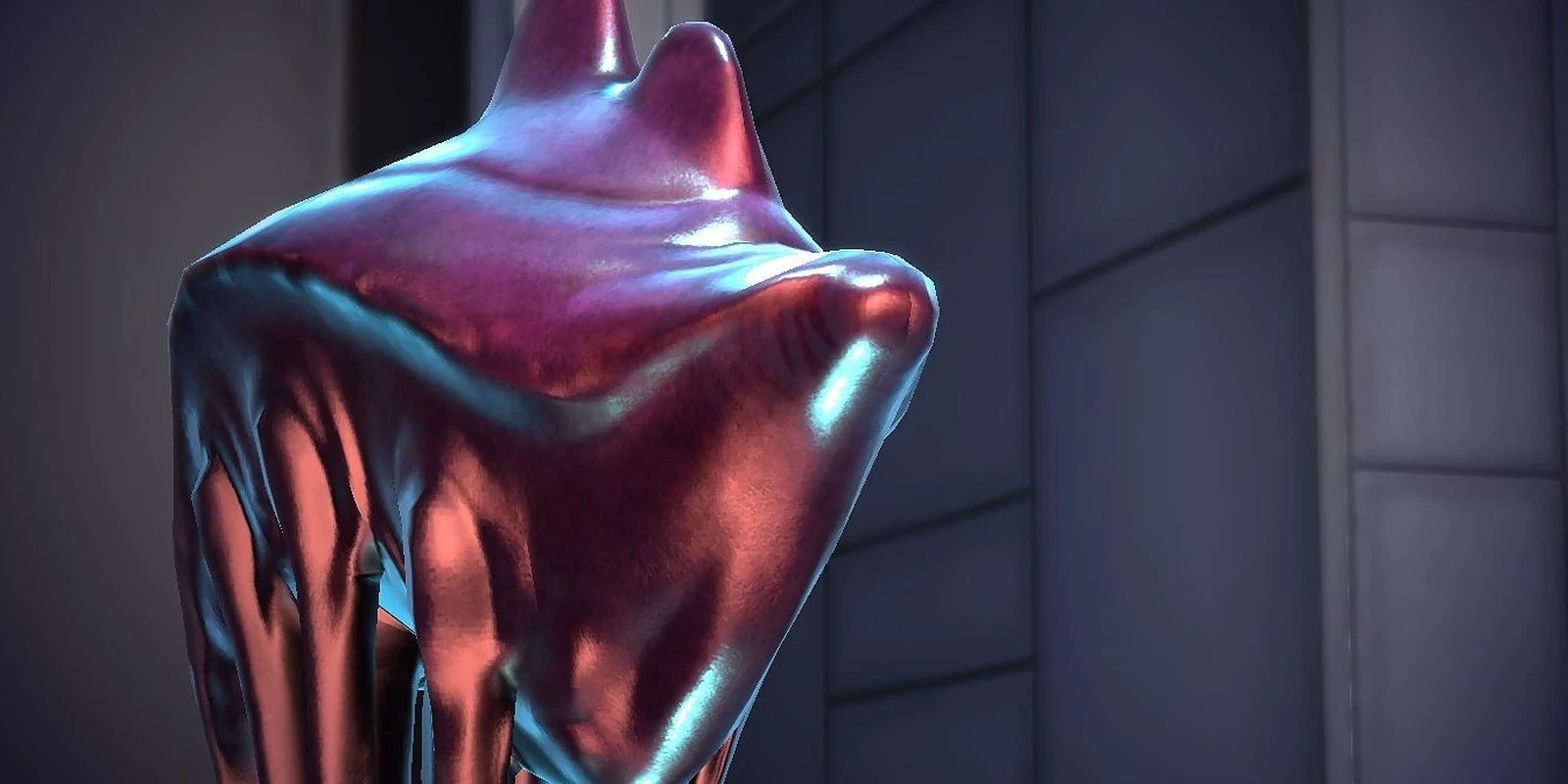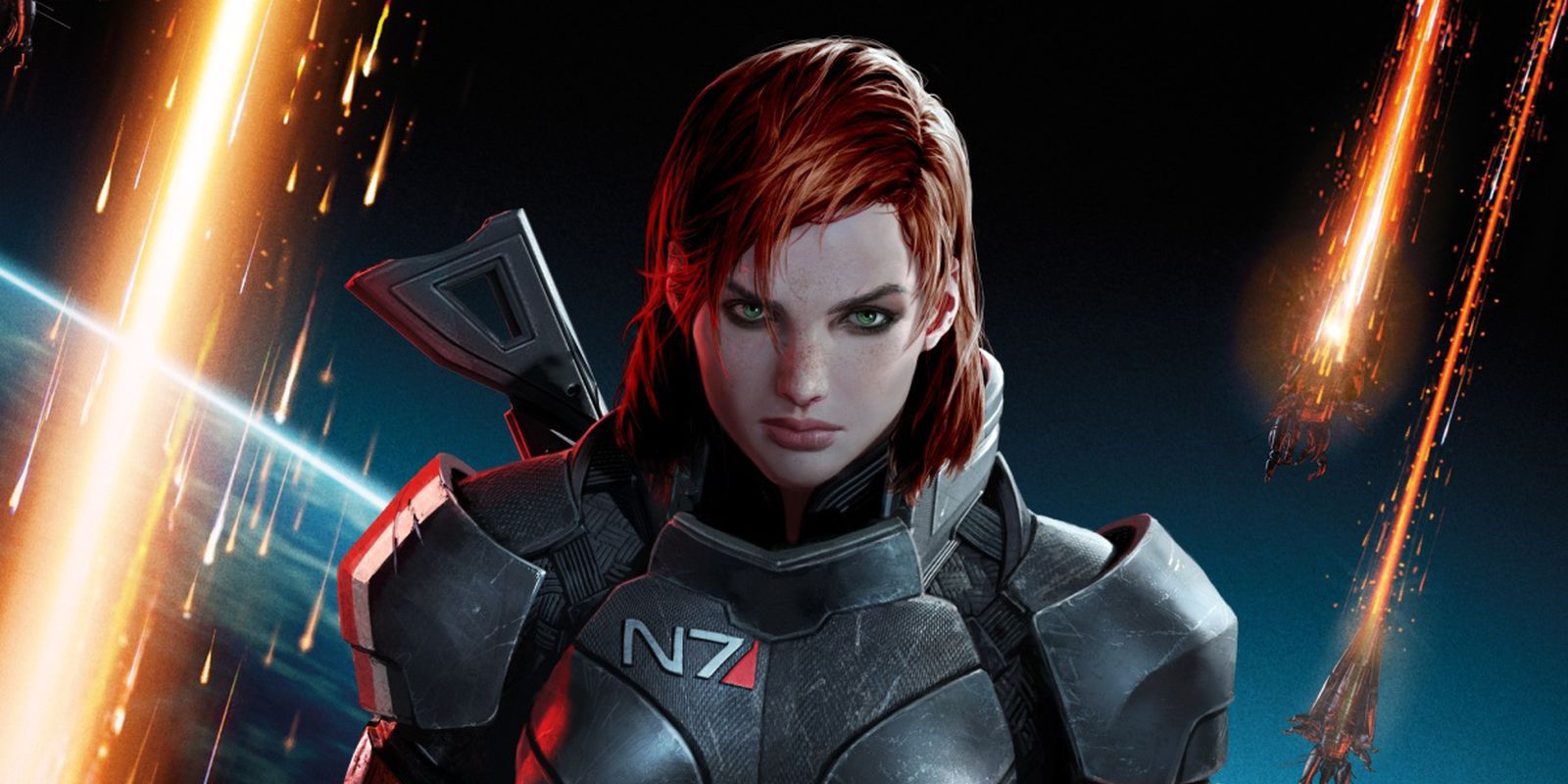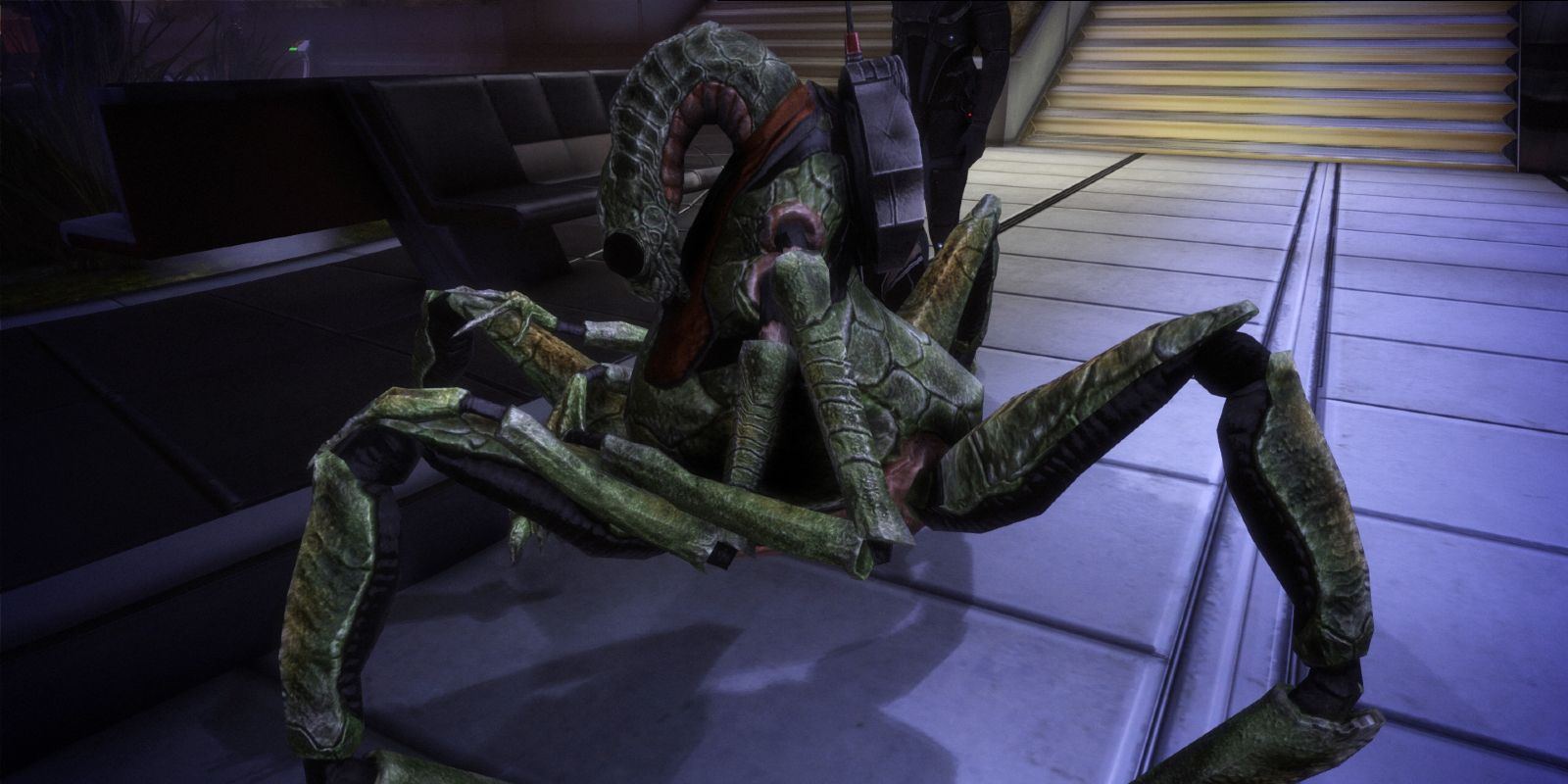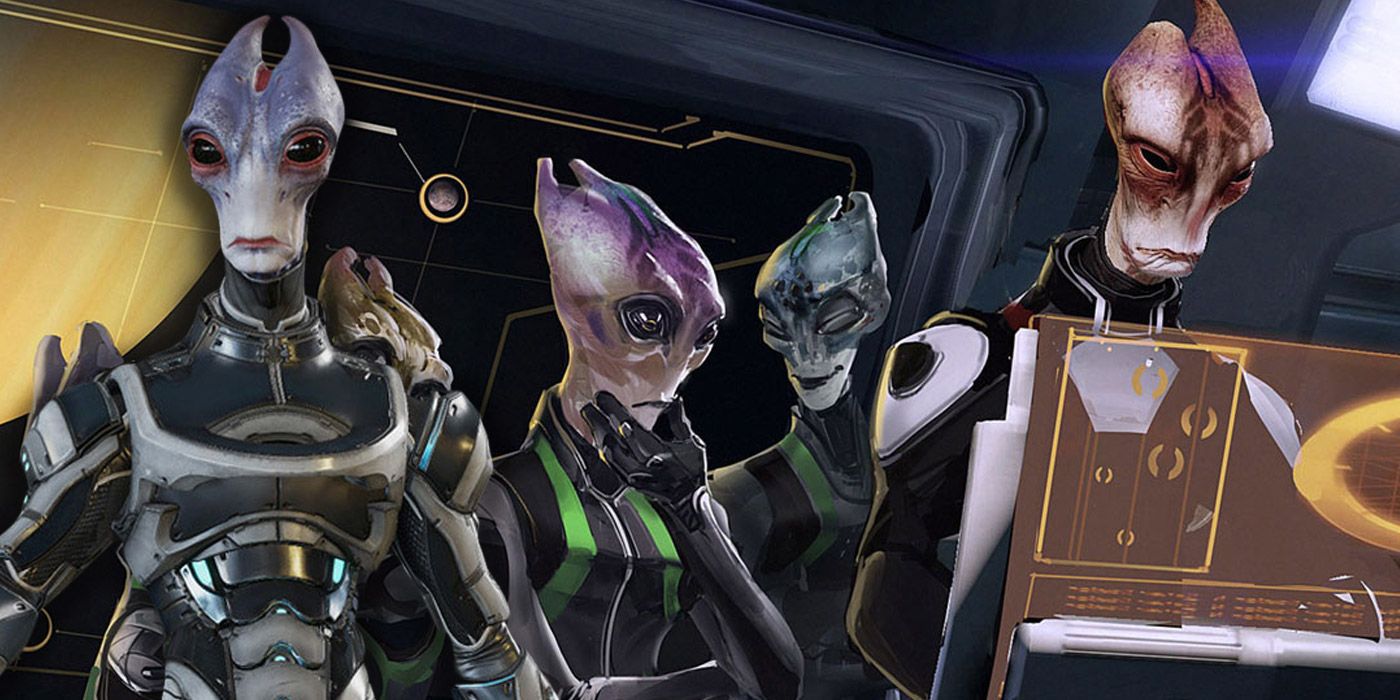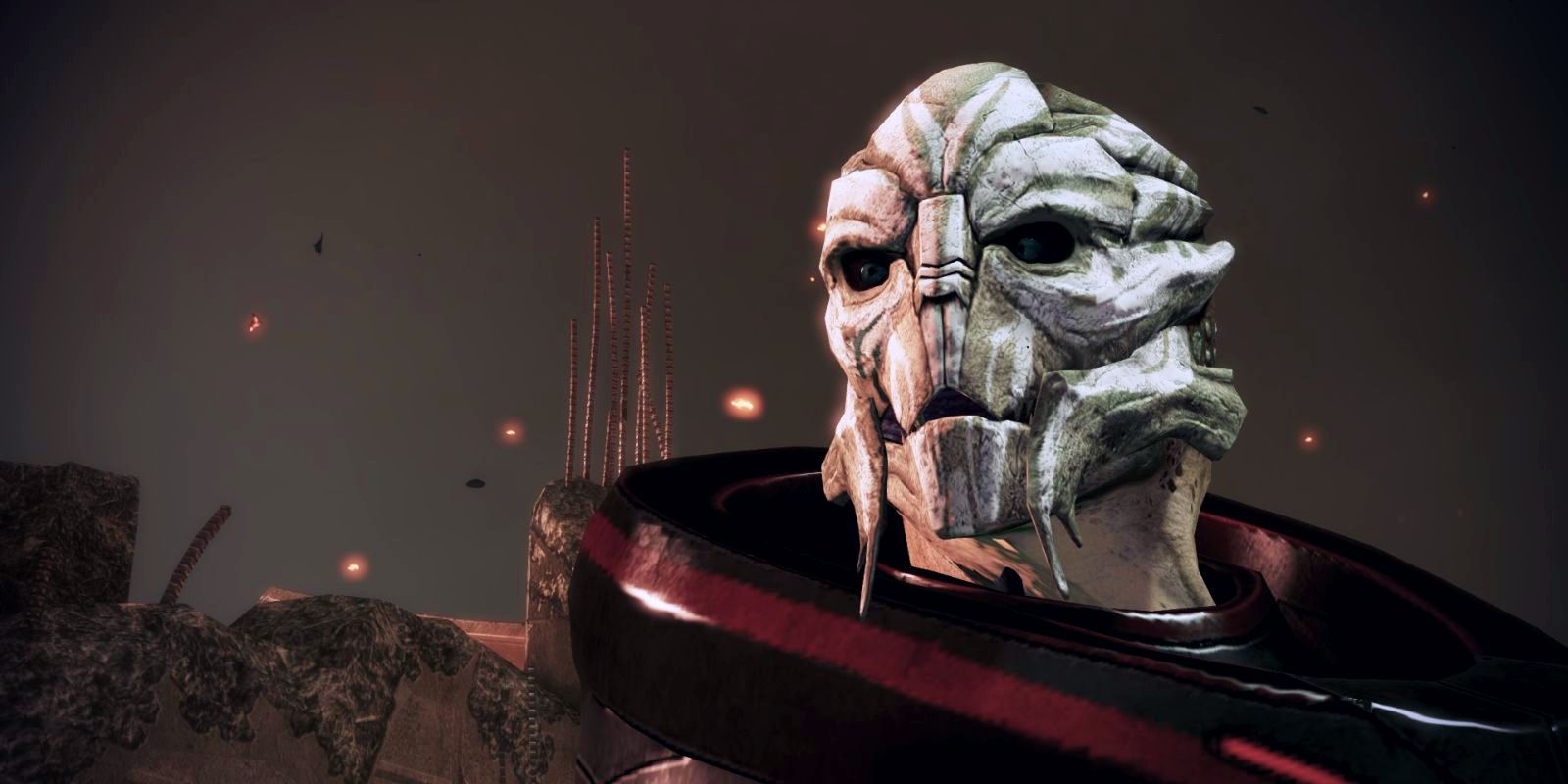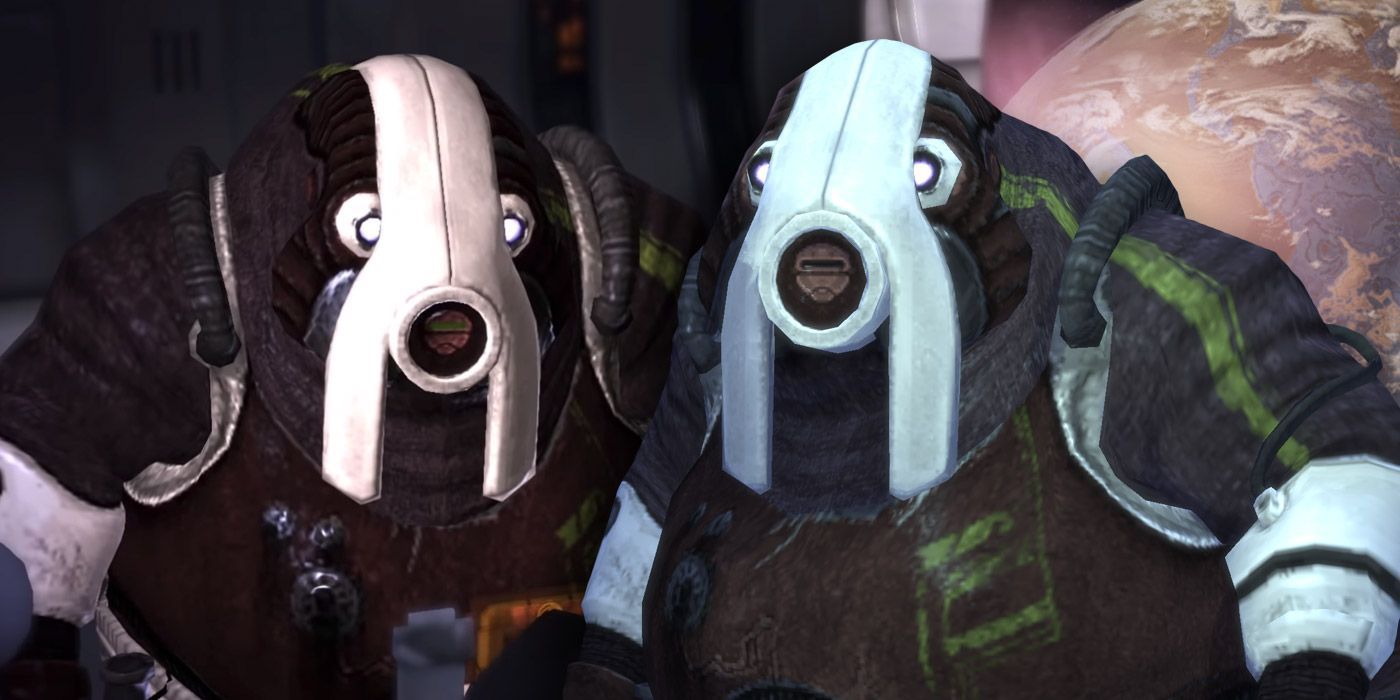Veterans and newcomers alike will return to all corners of the Milky Way Galaxy when Mass Effect: Legendary Edition releases in May. The original Mass Effect trilogy, receiving a facelift in Legendary Edition, features dozens of different alien species. While many are carnivorous monsters, some are intelligent races, and only nine of those make up the Citadel races.
The Citadel races are so called because their governing body resides on the Citadel, a massive space station (with fittingly long elevator rides) that predates all but one of its current inhabitant races. Mass Effect players will become intimately familiar with the Citadel and its denizens, since protagonist Commander Shepard is the first human to join the Spectres, elite agents conscripted by the Citadel Council to keep peace throughout Citadel space.
Each of the three games included in Legendary Edition has an incredibly thorough codex that details nearly every facet of the Milky Way. These codices, the games' hundreds of unique characters, and those characters' dialogue culminate in a rich and culturally diverse universe. Here's a quick rundown of all nine races that have an embassy on the Citadel in Mass Effect.
Mass Effect Citadel Alien Races: Asari
The Asari were the first to develop interstellar travel, find the mass relays (which allow easy traversal of the Milky Way), and discover the Citadel. They are a mono-gendered species and have a feminine appearance, though the male/female distinction is a foreign concept to them. Asari usually have a purple or blue complexion, with greener hues being possible but seemingly rare. One of the longest-living races in the Milky Way, Asari can live to be over 1,000 years old. Asari are frequently found to be great diplomats and were the most prominent race the in the founding of the Citadel Council.
Asari possess the ability to meld minds with other beings. Melding can be used to transfer thoughts between two participants and is also the means by which Asari reproduce. Their reproduction is unique in that it can be done with any race and any gender, including other Asari. Aside from being able to meld, Asari are also proficient in the use of biotic powers, telekinetic abilities possible through the manipulation of mass effect fields.
Mass Effect Citadel Alien Races: Drell
The Drell are a reptile-like race. Biologically, they prefer drier climates, since their now-destroyed home world of Rakhana was almost entirely comprised of arid desert. Their planet became uninhabitable after unchecked industrialization destroyed the atmosphere. The Hanar managed to save a fraction of the Drell population, integrating them into their own home world, but a large majority of the Drell perished while warring over continuously dwindling resources.
Both male and female Drell are typically a shade of green and possess five digits on each hand, although the their middle and ring fingers appear fused. A natural, mild venom is infused in Drell skin, and they have two sets of eyelids, like many reptiles. Drell also make use of powerful eidetic memories, making them able to remember people and situations with excruciating detail, even years later. Although canonically present on the Citadel during all three games, the Drell first appeared in Mass Effect 2.
Mass Effect Citadel Alien Races: Elcor
Elcor are massive creatures that evolved on a high-gravity planet, making them incredibly strong and deliberate in both movement and psyche. Communication between two Elcor is extremely subtle and complex, requiring vocal frequencies often unheard by other races, small bodily movements, and even scents. When speaking with other species, Elcor must preface their words with their intentions in order to avoid misunderstandings, since their voices always sound monotone to non-Elcor.
The Elcor were only beginning to explore space when first contact was made by the Asari. With the Asari's help, the Elcor utilized the mass relay nearest to their home world, Dekuuna, to establish trade routes to the Citadel. Because of their size, and possibly also their culture, many Elcor prefer to remain on Dekuuna rather than in space.
Mass Effect Citadel Alien Races: Hanar
The Hanar are an extremely polite, jellyfish-like species. They evolved in water on their home planet, Kahje, 90% of which is covered in ocean. Hanar appear to stand very tall, but most of their "height" is due to the long tendrils that hang down from their cranium. These tendrils can grip tightly but are not strong enough to support their weigh, so, when out of water, the Hanar use mass effect fields to levitate.
Each Hanar possesses a "face name" and "soul name," the latter only being known by those who are extremely close with them. The Hanar's unwavering politeness - and constant use of self-referential third-person speech, when speaking to people they know only on a face name-basis - makes them very difficult to get close to. Drell are often the only species who are able to achieve close personal relationships with the Hanar, since the Drell have integrated into society on Kahje after being rescued by the Hanar.
Mass Effect Citadel Alien Races: Humans
Humans are the most recent race to join the interstellar community. A data cache left on Mars by the Protheans, an extinct, space-faring civilization, was discovered in the year 2148. The mass relay network was found shortly after, and, in 2157, the First Contact War began when Turians attacked a fleet attempting to activate another dormant mass relay - an illegal activity in Citadel space. The intense conflict over a human colony on the planet Shanxi quickly garnered attention from the Asari, who brokered peace and introduced humans to the rest of the galactic community.
In part because of their ambitious nature - often attributed to their relatively short lifespans, which advanced medicine has lengthened to upwards of 150 years - humans quickly rose to prominence. Outside of Mass Effect 3's multiplayer, humans are Mass Effect's only playable race.
Mass Effect Citadel Alien Races: Keepers
By far the most mysterious of the Citadel races, the Keepers are believed to have been bio-engineered (like Mass Effect 2's Miranda Lawson) by the Protheans to be the caretakers of the Citadel. Very little is known about the Keepers, since they do not communicate with other species, and interfering with their activities in any way is highly illegal. Studying the Keepers in any way besides visual observation has also proven almost impossible, as captive Keepers produce a strong acid within their bodies and self-destruct through melting. There always appears to be the same number of Keepers, however, and it is theorized that they are created somewhere in the inaccessible core of the Citadel.
Mass Effect Citadel Alien Races: Salarians
Salarians have the shortest lifespan of any Citadel race, rarely living to be over 40. This is due to their extremely fast metabolism, which manifests in quick thinking, talking, and movement. These warm-blooded, amphibious aliens are highly intelligent - exemplified by Mass Effect 2 squadmate Mordin Solus - and make great use of lateral thinking and observation skills in research and inventing. Salarians are tall and slender and come in a variety of complexion colors, blue and grey being the most common hues.
Salarians were the second race after the Asari to discover the Citadel. They quickly engaged in diplomatic cooperation and even helped other species, such as the non-Citadel Krogans, achieve interstellar travel. In response to a series of violent Krogan rebellions throughout Citadel space, the Salarians created the Genophage, a biological weapon that renders Krogan births extremely difficult and rare. This notable atrocity, combined with their tendency to be the smartest in any given room, has earned the Salarians a reputation of being manipulators.
Mass Effect Citadel Alien Races: Turians
The Turians were welcomed into the fold during the Krogan rebellions and were responsible for dispensing the Salarian-developed Genophage. This effectively allowed the Turians to replace the Krogans in Citadel-space society, and the Turians took on military and peacekeeping roles. Turian culture is rigid and disciplined, being seen as imperialistic and overly strict by other races. Animosity remains between the Turians and humans because of the First Contact War, though tensions are being eased, in part due to fan-favorite Garrus' work on the SSV Normandy. Although not the third species to arrive on the Citadel, the Turians joined the Asari and Salarians to form the Citadel Council, the highest governing body in Citadel Space. Their spot on the Council was granted because of their significant contributions to the Citadel Fleet and their instrumental involvement in forming Citadel Security Services.
Turians typically stand over six feet tall, have three fingers tipped in talons on each hand, and have a set of mandibles surrounding their mouths. Their carapace is metallic, an evolutionary consequence of the high levels of solar radiation on their home world, Palaven. Female Turians are almost identical to males, except for the horns found on the crest of male Turian skulls.
Mass Effect Citadel Alien Races: Volus
The Volus have long been the leaders of banking and trade in Citadel space, a role they feel is deserving of a seat on the Citadel Council. These feelings are only exacerbated by the fact that the Volus were the third species to settle on the Citadel, following the Asari and Salarians. Members of the Citadel Council are required to have provided extensive contributions to the interstellar community, such as starships, material resources, and economic aide, and Volus biology makes it difficult for the race to provide these in any great number.
The Volus evolved on a planet called Irune, which has an ammonia-saturated atmosphere. Consequently, the Volus cannot survive in environments conducive to other species and are almost always seen in protective suits that provide them breathable air and are pressurized to match the high-pressure atmosphere of Irune. This makes it incredibly difficult for the Volus to find habitable space, since the volatility of their native environment is a danger to other races. This is probably the main reason why there was never a Volus squadmate in Mass Effect.

